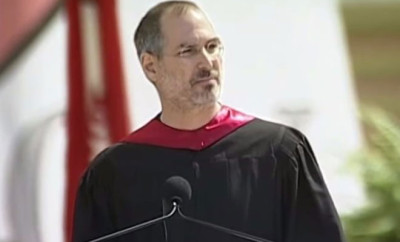
What Makes a Modeller?
Modelling is at the heart of NLP: it’s the methodology that leaves behind the field’s famous “trail of techniques”. But for many students of NLP, challenged to undertake a modelling project as part of their Master Practitioner course, it can be something of a puzzle.
I’m sure I’m not alone in struggling to get started, overwhelmed by competing methodologies on the one hand, and baffled by the missing links in trainers’ stories of Bandler, Grinder and the “wild days” on the other.
What actually makes a great modeller? Penny Tompkins and James Lawley should know. They are not only expert modellers themselves, but have undertaken a number of modelling projects in which they have modelled great modellers.
They have studied with many of NLP’s best-known modellers – including John Grinder, Robert Dilts, John McWhirter, David Gordon and Graham Dawes – and have been involved in a huge range of modelling projects. Modelling has become a habit for them, to the extent that Penny said: “We almost can’t not model nowadays”.
In their first major modelling project, the couple modelled psychotherapist David Grove, creator of Clean Language. What began as a one-year commitment extended to four years before they eventually published their book, Metaphors in Mind, in 2000.
A breakthrough moment came when they realised that Grove wasn’t trying to change his clients – he was modelling their inner landscapes – a process Penny and James called “symbolic modelling”.
Now, as psychotherapists themselves, they model their own clients’ inner worlds and help them to discover more about themselves, how they do what they do, and how they can have more choice – to “self-model”. As trainers, they model their students’ learning processes.
Recently, they modelled well-known NLP modeller Robert Dilts over the course of a weekend, as part of an event organised by Fran Burgess and Derek Jackson of the Northern School of NLP. The results of that project are now available in a comprehensive report – including video clips and transcripts – on their website.
What is Modelling?
‘Modelling’ in NLP has very little to do with either Naomi Campbell, or building miniature plastic aeroplanes! It’s more akin to scientific modelling: Wikipedia describes this as “the process of generating a model as a conceptual representation of some phenomenon”.But there are wheels within wheels. In NLP, modelling is typically viewed as a process whereby a modeller:
- identifies an exemplar (a person, or people who exemplify some desired behaviour or skill);
- gathers information about what the exemplar does;
- constructs a model of how they do that;
- tests whether using the model gets similar results to the exemplar.
- goes on to use the model themselves, or facilitates others (acquirers) to learn how to apply the model.
There are lots of ways of doing each stage.
Penny and James distinguish between this process, “product modelling”, and the related process of “therapeutic modelling”. In the latter, a therapist constructs a working, in-the-moment model of their client’s “model of the world”, which they use to guide their interventions. This may be held more or less consciously by the therapist – there is no need to formalise it, to write it down, or to share it.
For a number of articles about modelling including “How to do a modelling project”.
Levels of modelling
When Penny and James were modelling David Grove, there were multiple levels of modelling going on.
The client was learning more about themselves – self-modelling
- Grove was learning about his client’s inner world – therapeutic modelling
- Penny and James were creating a model of Grove’s process with a view to making his skill available to others – product modelling.
It seems that they’ve come a long way. As they explained, when they began their work with David Grove, they realised that most of what was known about NLP modelling was implicit. John Grinder and Richard Bandler had written up the results of their early modelling, but not how they did it. So Penny and James had to “reverse engineer” how the founders of NLP had done it before applying that learning to their modelling of Grove.
To make things worse, Grove was a very reluctant exemplar! He initially agreed to be modelled only on condition that he didn’t have to answer any questions and that they didn’t mimic what he was doing. They could attend his seminars, but only as ordinary participants.
Gradually, he became curious about what they were doing and became a close friend. But he remained reluctant to answer questions about what he was doing. When he eventually agreed to be interviewed, it had to be in a hot tub, with the recording equipment well out of sight. James said: “So much of him was out there running around in the client’s landscapes that he didn’t spend time self-reflecting on his own internal processes.”
In contrast, Robert Dilts was an enthusiastic subject, who loved to talk about his modelling process – as befits the author of Modelling with NLP. By the time Penny and James modelled him, they had had plenty of practice and knew better than to try to model his entire process in a few hours. Instead they selected a small part to pay attention to – how he selects “what is essential” while modelling.
It’s a superb NLP modelling pedigree. If anyone can help those struggling Master Prac students, it’s Penny and James.
I should declare an interest. I’ve been an avid student of Penny and James’s work for several years, and would happily interview them about modelling for hours. In doing so, I’m a modeller, too.
And in this article, we have two pages – and that brings me up against the modeller’s dilemma. I have many pages of notes, two hours of audio recording. What do I select, from all the information I have, to include in my “model”. What’s essential? And how I can I best present the model so that you, the reader, are able to use it?
As James observed, this part of the modelling process can feel almost violent: after making pristine observations of your exemplar’s words and actions, you now find yourself changing them to make them easier for others to adopt.
And every newly-created model is born of the modeller’s map: it draws on the modeller’s knowledge and experience, and is ultimately limited by their imagination and other mental capacities.
So, I’ve selected one key piece, which I think you’ll find interesting because it’s new, and because it provides something which many NLPer will find useful and relevant. It’s a new model, which Penny and James have not published before. And it encapsulates Penny and James’ learning from various modelling projects over the years.
It’s a list of the core skills required of a good modeller.
- Outcome orientation, having a strong sense of what your purpose is in conducting a particular modelling projectand being able to maintain that while navigating the unfamiliar and often confusing territory that is the exemplar’s world. The outcome remains a “dynamic reference point” that guides the modeller throughout the project.
- Sensory acuity. High-quality listening and observation skills – including the ability to suspend judgement – are essential ingredients.
- Being comfortable with large amounts of information, and with not knowing how it all fits together. Penny and James’s experience suggests that most, if not all, modellers will be inundated with information, much of which will not be relevant, and they need to have some way of coping with it all.
- Responsiveness in the moment. The model-in-progress needs to be constantly updated as new information emerges. As James said: “It’s like one of the rules of improvisational comedy – whatever someone says, you run with it.”
- Signals for significance. All models are incomplete – “the map is not the territory”. But expert modellers seem to have a strong and reasonably accurate sense of what’s most important for the model to work in practice.
- Pattern detection and split attention. A key NLP distinction is between content and process – between what a person thinks and/or does, and how they think and/or do it. An expert modeller is able to pay just enough attention to the content to keep the process moving, while noticing and investigating patterns at the process level. Penny said: “You can know there’s a pattern before you can articulate it.”
This is something of a work in progress: there may be crucial pieces missing, or it may not be as elegantly simple as it’s possible to make it.
The proof of its value will be in the results it gets. If you’re an NLP modeller, why not try developing these skills – and let me know what happens next?







